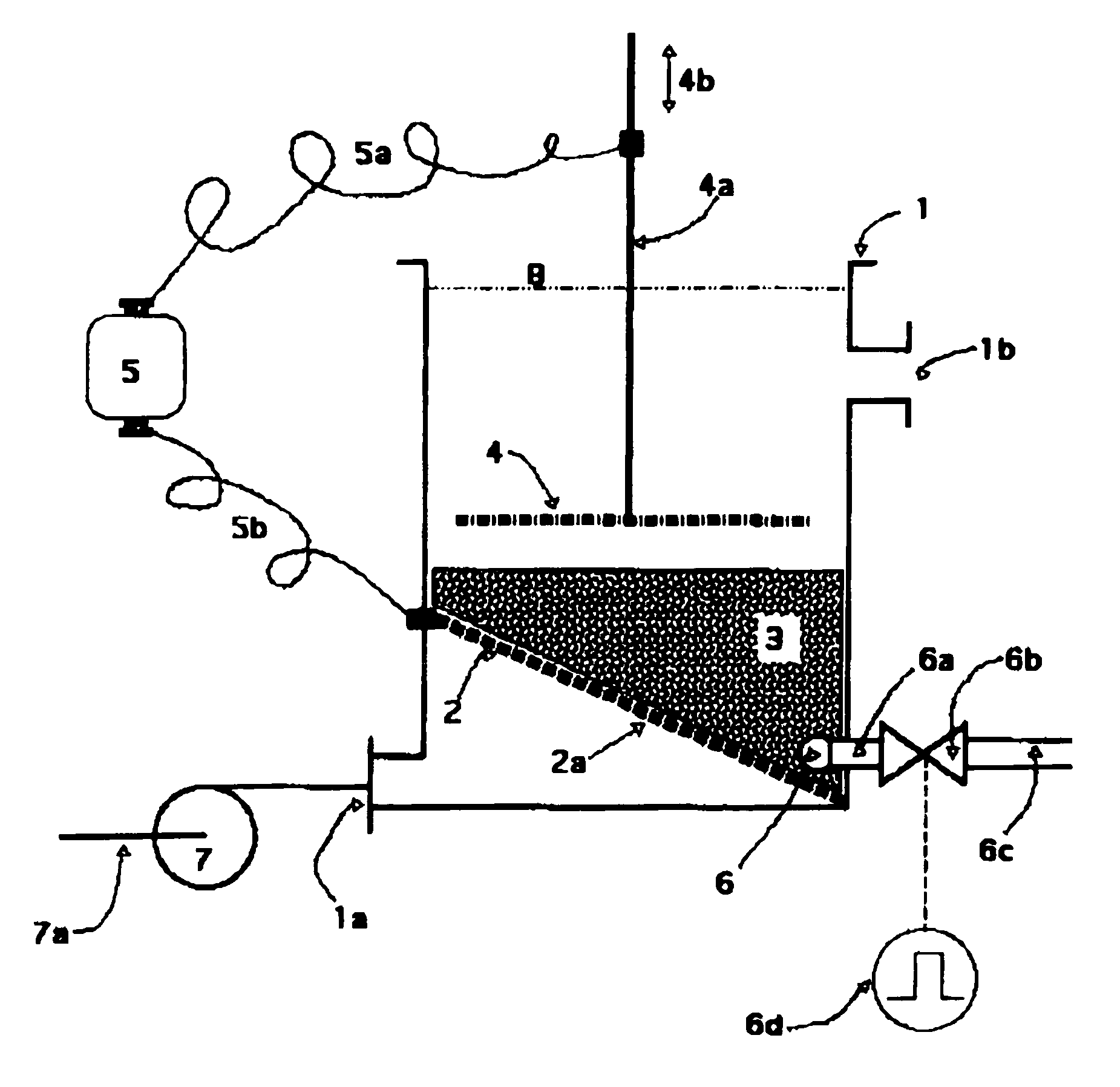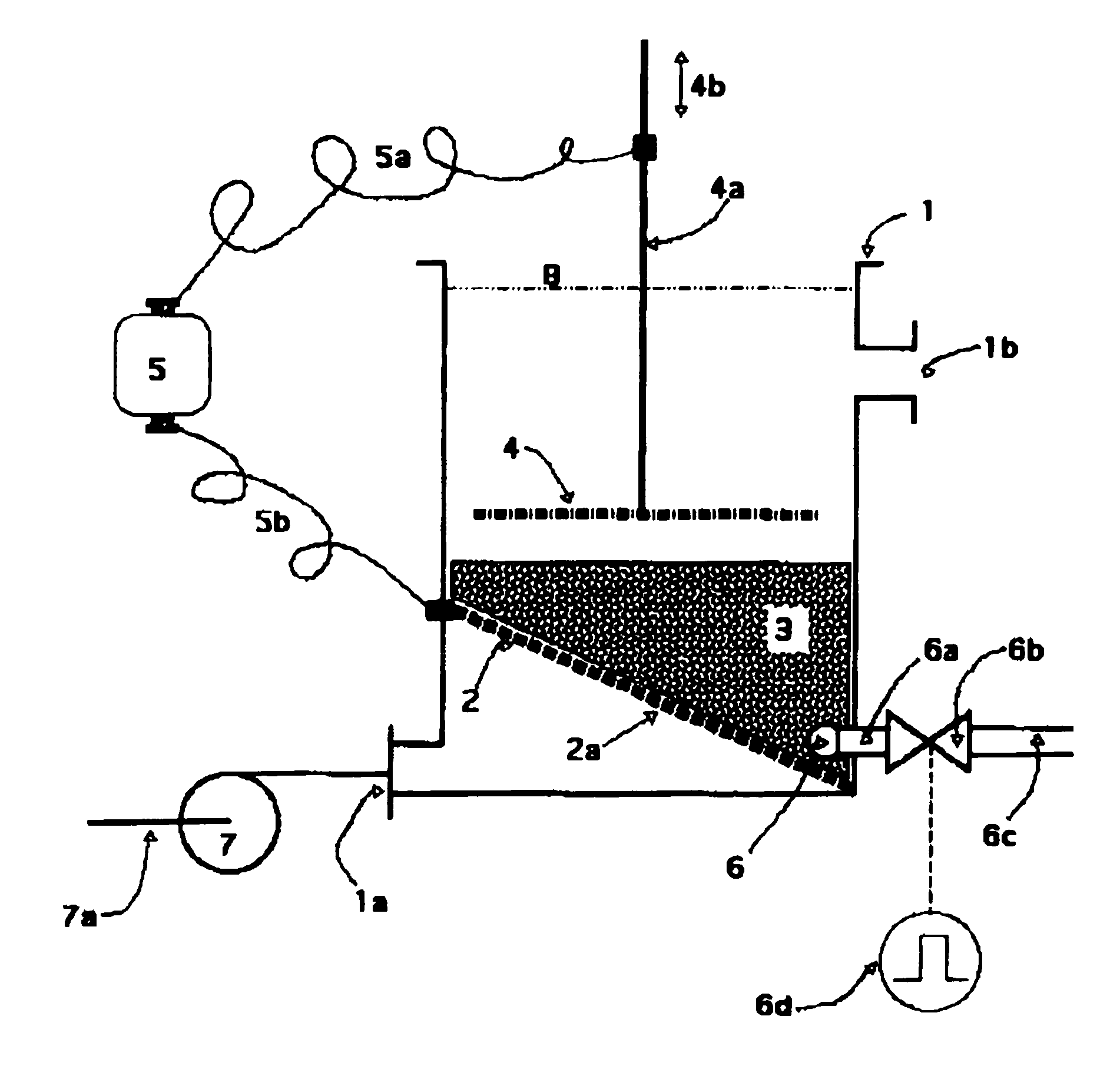Moving electrode electroflocculation process
a moving electrode and electroflocculation technology, applied in the field of water treatment, can solve the problems of low current efficiency, solutes have a tendency to form scales and foul equipment, and the electroflocculation cells of the art are prone to fouling, so as to minimize the build-up of organic or inorganic deposits
- Summary
- Abstract
- Description
- Claims
- Application Information
AI Technical Summary
Benefits of technology
Problems solved by technology
Method used
Image
Examples
example i
[0045]An electroflocculation cell according FIG. 1 contained as electrode (3) aluminium granules (pellets) of 2-3 mm diameter. This bed of aluminium granules rested on a 5 mm aluminium metal plate as the support (2). The metal plate (2) had various 1 mm diameter openings (2a). The tilting angle of the support (2) was 20 degrees. At the thickest part of the granule bed (3) and attached to the support plate (2) a gas injection tube (6) of 25 mm outer diameter was positioned. This gas injection tube was equipped with a number of tiny openings to permit passage of the gas directed into the granule bed (3). The medium depth of the granule bed was 40 cm.
[0046]Directly above the granule bed electrode (3) an aluminium gridmesh electrode (4) as a 4 mm strong perforated metal plate had been attached via metal rods (4a) to a mechanical vibrator.
[0047]The perforations represented 45% of the metal plate (4).
[0048]Measured submerged, the average vibration amplitude of the gridmesh electrode (4) w...
example ii
[0055]An electroflocculation cell according FIG. 1 contained as electrode (3) iron granules of 1-3 mm diameter. This bed of granules rested on a 6 mm steel plate as the support (2). The steel plate (2) had various plastic nozzles with 0.7 mm openings (2a). The tilting angle of the support (2) was 28 degrees. At the thickest part of the granule bed and attached to the support plate (2) a gas injection tube (6) of 20 mm outer diameter was positioned. This gas injection tube was equipped with a number of tiny openings to permit passage of the gas directed into the granule bed (3). The medium depth of the granule bed was 60 centimeters.
[0056]Directly above the granule bed electrode (3) an rib mesh electrode (4) made from 8 mm diameter steel wire had been attached via metal rods (4a) to a mechanical vibrator.
[0057]The perforations represented 85% of the electrode area (4).
[0058]Measured submerged, the average vibration amplitude of the rib mesh electrode (4) was 2 mm. Vibration frequency...
PUM
| Property | Measurement | Unit |
|---|---|---|
| tilt angle | aaaaa | aaaaa |
| tilting angle | aaaaa | aaaaa |
| tilting angle | aaaaa | aaaaa |
Abstract
Description
Claims
Application Information
 Login to View More
Login to View More - R&D
- Intellectual Property
- Life Sciences
- Materials
- Tech Scout
- Unparalleled Data Quality
- Higher Quality Content
- 60% Fewer Hallucinations
Browse by: Latest US Patents, China's latest patents, Technical Efficacy Thesaurus, Application Domain, Technology Topic, Popular Technical Reports.
© 2025 PatSnap. All rights reserved.Legal|Privacy policy|Modern Slavery Act Transparency Statement|Sitemap|About US| Contact US: help@patsnap.com


